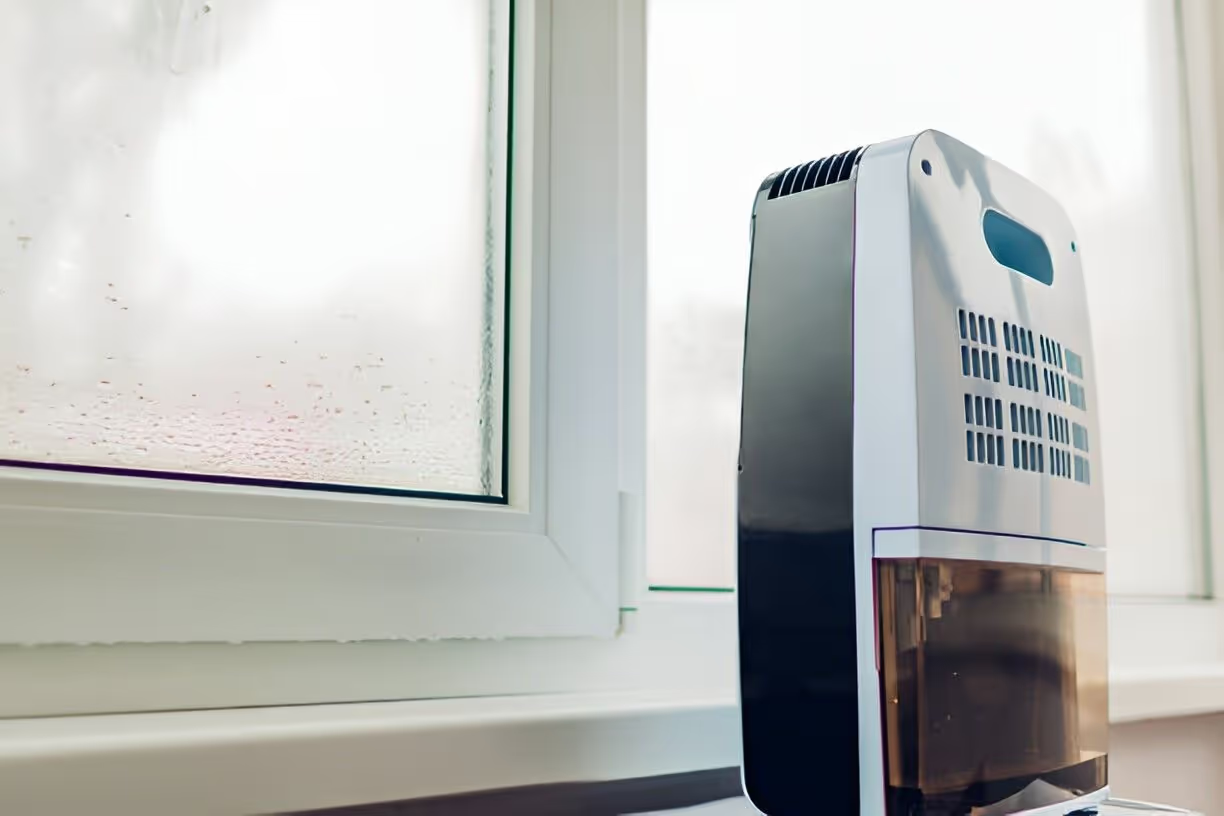Whole House Dehumidifiers in Gibsonton, FL


Why a whole-house dehumidifier makes sense in Gibsonton, FL
- High average humidity and frequent sea breezes increase indoor moisture loads.
- Warm, humid air leads to mold and mildew in attics, crawlspaces, bathrooms, and on HVAC ductwork.
- Controlling humidity improves perceived comfort so you can raise thermostat setpoints and reduce A/C runtime while keeping air feeling less muggy.
- Protects wood floors, cabinetry, electronics, and fabrics that degrade faster in salty, humid air.
Common whole-house dehumidifier issues in Gibsonton
- Persistent condensation on windows and metal surfaces during summer or after storms.
- Mold and musty odors in closets, attics, and crawlspaces.
- HVAC short-cycling or duct sweating due to excess latent load.
- Corrosion on exterior components from salt air when outdoor drains or vents are exposed.
Ducted dehumidifier options and how they work
- In-duct (ducted) dehumidifiers are installed in the HVAC return or supply plenum and treat air circulated by the existing fan. They remove moisture without significantly lowering temperature.
- Bypass coil systems may integrate with the air handler so dehumidification runs independently of cooling cycles.
- Refrigerant-based whole-house units use a cooling coil to condense and remove moisture, while desiccant systems are available for special high-humidity applications.
- units are sized by moisture removal capacity, given in pints per day (or liters/day) under standardized test conditions.
Sizing: moisture removal, square footage, and local climate
Sizing depends on home square footage, airtightness, occupancy, and local humidity. Gibsonton’s subtropical climate increases required capacity compared with drier regions.
- General guideline: small homes or tightly sealed spaces (under 1,200 sq ft) often need 30–50 pints/day units; medium homes (1,200–2,500 sq ft) typically need 50–80 pints/day; larger or leakier homes and those with heavy moisture sources may require 80–120+ pints/day.
- Adjust up if you have frequent showers, many occupants, indoor laundry drying, a pool, or known crawlspace/attic moisture issues.
- A professional moisture load calculation measures sources of humidity and matches a unit to your home’s latent load for reliable RH control.
Target humidity and comfort guidance for Gibsonton
- Aim for 45–55% RH indoors. This range reduces mold growth risk while avoiding window condensation in a coastal climate.
- In cooler winter nights or during storms, maintain RH on the lower end; during very humid summer months, hold RH tight to prevent mustiness and microbial growth.
Installation and drainage requirements
- Typical installations connect the dehumidifier to the HVAC return or supply plenum; location choices affect noise, access, and drainage routing.
- Drainage options:
- Gravity drain to an existing condensate line or exterior location when the unit is below the outlet.
- Condensate pump when gravity drainage is not possible; pump should have reliable float switch and check valve to prevent backflow.
- Tie-in to the HVAC condensate drain or to a laundry sink when allowed by local code.
- For coastal Gibsonton homes, route discharge away from foundation and exterior HVAC equipment to limit salt exposure and splashback.
- Electrical: units require dedicated circuits and appropriate disconnects; some larger units need 240V power.
Controls and HVAC integration
- Dehumidifiers can use a dedicated humidistat, integrate with smart thermostats, or be controlled by the air handler’s control board.
- Zoned homes may need multiple units or zone-specific control strategies to prevent uneven humidity levels.
- Integration benefits: coordinated operation with A/C reduces cycling, improves comfort, and can extend equipment life by reducing latent load on the air conditioner.
Energy efficiency and operational costs
- Whole-house dehumidifiers vary in power draw; smaller units can use a few hundred watts, larger units near 1,000 watts or more during active dehumidification cycles.
- To estimate running cost: (Unit watts ÷ 1000) × hours per day × local electricity rate = daily cost. In Gibsonton, typical runtime during humid months may be 8–16 hours/day depending on home tightness and setpoint.
- Modern, high-efficiency models use variable-speed fans and compressors to reduce runtime and electric draw; look for units with performance data showing pints removed per kWh.
- Energy trade-off: reducing indoor humidity usually allows setting the thermostat a degree or two higher while maintaining comfort, which can offset some dehumidifier energy use.
Maintenance tasks and seasonal advice
Regular maintenance keeps performance optimal:
- Replace or clean the air filter every 3–6 months.
- Inspect and flush the condensate drain and pump to prevent clogs and odors.
- Clean coils and condensate pans annually to prevent algae and mold growth.
- Verify control calibration and check the humidistat seasonally.
- For refrigerant-based systems, have a trained technician inspect refrigerant charge and compressor health during annual service.
Seasonal tips for Gibsonton:
- Before the rainy season or hurricane season, schedule an inspection to ensure drains and pumps are working and sealed.
- During drier winter months, reduce setpoint to avoid over-drying; in late spring and summer expect longer runtimes.
Typical warranty and service plan coverage
- Standard manufacturer warranties often include a short-term parts warranty plus a longer compressor warranty (commonly several years).
Service plans for whole-house dehumidifiers commonly cover:
- Annual inspection and cleaning of coils, filters, and drains.
- Priority scheduling and discounted labor rates for repairs.
- Pump replacement or drain-line service options.
- Verification of refrigerant pressure and electrical safety checks.
- For coastal Gibsonton installations, consider plans that address corrosion-prone components and faster wear from salty air.
Final considerations for Gibsonton homes
A properly sized, well-installed whole-house dehumidifier tailored to Gibsonton’s humid, coastal conditions delivers clear benefits: reduced mold risk, better indoor air quality, improved comfort, and longer HVAC equipment life. Accurate sizing, correct drainage, smart control integration, and regular maintenance are essential to achieve reliable performance and efficient operation in this climate. A professional moisture load assessment and installation plan ensures the unit selected matches your home’s needs and local environmental challenges.
Service Areas


